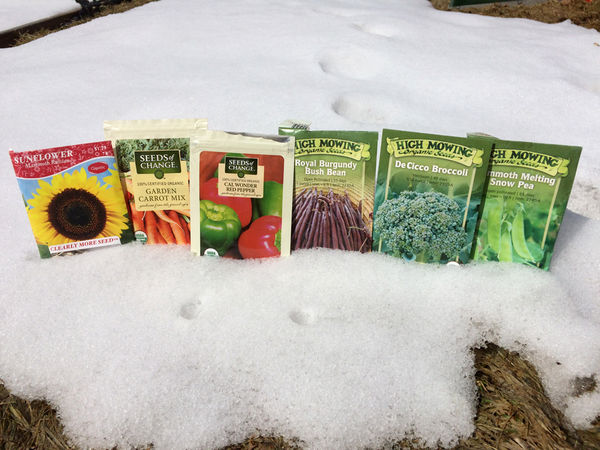Never too early to start garden planning

It may still be a little early to start seeds, but there are a number of free and paid garden planning websites that can help scratch the outdoor itch until planting time comes around. News photo — Justin A. Levine
Even though it’s still snowing out, if you’re into gardening you no doubt are itching to get outside again. One productive thing you can do this time of year, when spring is near but it’s too early to start planting is make your garden plan.
For vegetable gardens, there can be all sorts of factors that need to be considered – from spacing the plants to soil depth and condition, to what plants will be tall and shade out others or need a trellis to climb.
Obviously, the internet is home to just about all the information you could want about how to effectively plan your garden, but there are also some websites dedicated solely to helping you maximize your garden each year.
—
National Gardening Association
The National Gardening Association offers a planting calendar based on your specific zip code. Just type it in and a list of the most common vegetables pops up with planting dates and directions.
Perhaps the nicest part of the NGA website is its simplicity. This site doesn’t offer so much a garden planning section as much as guidelines which are easy to follow.
But it’s not just a list of plants and dates on the website. The NGA also has blogs and articles on gardening, contests, photos and a question and answer section. It also has a calendar of gardening-related events, although there are no local ones listed.
To check out the NGA’s garden calendar, go to www.garden.org/apps/calendar.
—
Farmer’s Almanac
The Old Farmer’s Almanac, a staple of hardware stores and grocery check-out lines, doesn’t just try to predict the weather for the whole year. Its website offers an in-depth garden planning application that can help manage more extensive gardens.
Although the Almanac’s site requires payment, there is a lot of automation that occurs that can really simplify planting and garden management. Some of the benefits include the program maintaining the layout of your garden from year to year and color-coding so crop rotation is easy to manage.
The Almanac will also email you reminders on when to start seeds and plant outdoors based on your location and touts the cost-savings from buying only the supplies you’ll need to get through the year. And for the more tech-savvy gardeners out there, the Almanac’s app works on your computer, tablet or phone.
There are also no shortage of resources available beyond the garden plan. The Almanac allows you to keep an online journal, order seeds and look up gardening tips.
For more information, including pricing, go to www.gardenplanner.almanac.com/garden-planner-intro.aspx.
—
VegPlotter
VegPlotter is a free online-based planner that offers a high use of ease when it comes to planning the garden. You have to register, but the site says it takes privacy seriously and even says you don’t have to put in your exact location as long as you choose a place with a similar climate.
Once logged in, VegPlotter asks that you measure your garden beds and lay them out on a grid pattern. The program offers a tutorial, and dragging and dropping items from the drop-down menu is really easy. Once the rough outline of your garden bed is in place, simply drag a vegetable from the side and put it in the garden.
The program will then tell you how many veggies you can fit in the designated space and when they should be sown or transplanted. The sidebar also gives the proper spacing and a place to keep notes.
VegPlotter can be found at www.vegplotter.com.
—
Excel
If you’re pretty well versed in gardening and know that, for instance, broccoli should be planted 18-24 inches apart, then you may not need all the bells and whistles that come with the websites. For most people, their computer already has Microsoft Excel on it, and the grid pattern of the program can make for an easy visualization of what the garden will look like.
What most people do with Excel is color-code individual cells in the program to represent different vegetables and square feet of garden. If your garden beds aren’t rounded, then the cells can be moved around to fit the same shape as the bed. This allows you to decide how much room to dedicate to each vegetable and see which plants are growing next to each other.
While a great option for those who have the program and know how to use it, those are also the two biggest drawbacks.






